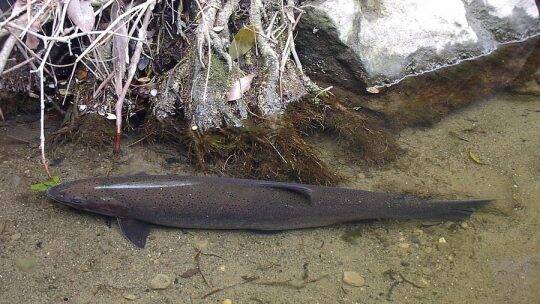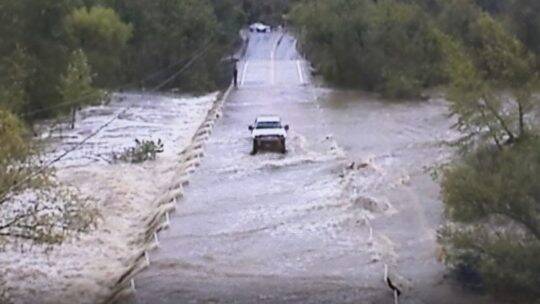Santa Margarita River Wildlife Milestone – Fish Passage For Endangered Steelhead
The Santa Margarita River in northern San Diego County is a high priority river for endangered steelhead recovery and has just met a major milestone in recovering this iconic species on the brink of extinction. CalTrout was recently awarded a grant from the California Natural Resources Agency to replace an aging concrete flood-prone river crossing near Fallbrook with a new steel bridge. Nearly $6 million was secured from this funding program, completing the 18 million dollars needed for Project construction.

Southern steelhead. (Photo by Mark Capelli)
The Project will eliminate the last remaining fish passage barrier on the river mainstem, and become the first perennial river in So Cal to be free from coast to headwaters. The Santa Margarita River historically supported steelhead. It has escaped the urban sprawl that has impacted much of coastal Southern California through land ownership protection along the length of the wildlife corridor – by Camp Pendleton, The Wildlands Conservancy and San Diego State University. The river still has natural river channels and flows year-round, has vast wild areas, extensive hiking trails, and a spring-creek character at the headwaters 29 miles inland.

Although the river looks beautiful, the native fish that once teemed in the waters are now virtually gone. Steelhead numbers have plummeted in the last century throughout Southern California. This is largely due to fish passage barriers that have prevented steelhead from accessing upper reaches of rivers that contain critical spawning and rearing habitat. The Sandia Creek Drive road crossing the Santa Margarita River is one of those barriers. Replacement of the existing road with a new steel bridge just downstream will provide juvenile and adult steelhead access to 12 miles of upstream habitat.
Developed through community engagement with private, state, and federal funds from CDFW, NOAA, Coastal Conservancy, Wildlife Conservation Board, California Fish Passage Forum, and California Natural Resources Agency, this Project provides multiple benefits for the community. It improves road infrastructure and public safety for trail users and commuters, offers jobs and recreational opportunities, delivers significant flood management benefits, eliminates swift-water crossing conditions when it floods during big rainstorms, restores the natural hydrology to the river, and integrates endangered species protection into an important wildlife corridor.

The current bridge at Santa Margarita River poses great flood risk.
Through this three-year funding effort led by CalTrout, and supported by the South Coast Steelhead Coalition and regional partners, the project is in final design phase with plans to start construction in early 2022. The existing river crossing will remain operational until the new bridge is built. The project team is working with San Diego County to meet design standards and complete permitting, and with local partners on project area restoration and public outreach on the cultural history and environmental qualities of this natural jewel of San Diego County.






1 Comment
Bravo!!! That’s great news and a great job.